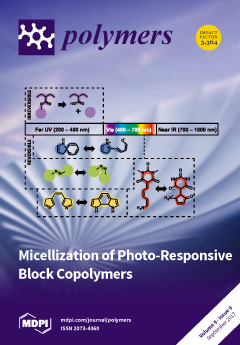Open AccessArticle
Osteogenesis of Adipose-Derived and Bone Marrow Stem Cells with Polycaprolactone/Tricalcium Phosphate and Three-Dimensional Printing Technology in a Dog Model of Maxillary Bone Defects
by
Jeong Woo Lee 1, Seung Gyun Chu 1, Hak Tae Kim 1, Kang Young Choi 1, Eun Jung Oh 1,2, Jin-Hyung Shim 3, Won-Soo Yun 3, Jung Bo Huh 4, Sung Hwan Moon 5, Seong Soo Kang 6 and Ho Yun Chung 1,2,*
1
Department of Plastic and Reconstructive Surgery, School of Medicine, Kyungpook National University, Daegu 41944, Korea
2
Cell & Matrix Research Institute, School of Medicine, Kyungpook National University, Daegu 41944, Korea
3
Department of Mechanical Engineering, Korea Polytechnic University, Siheung-Si 15073, Korea
4
Department of Prosthodontics, Dental Research Institute, Institute of Translational Dental Science, School of Dentistry, Pusan National University, Yangsan-Si 50612, Korea
5
Department of Medicine, School of Medicine, Konkuk University, Seoul 05029, Korea
6
College of Veterinary Medicine, Chonnam National University, Gwangju 61186, Korea
Cited by 28 | Viewed by 7573
Abstract
Bone graft material should possess sufficient porosity and permeability to allow integration with native tissue and vascular invasion, and must satisfy oxygen and nutrient transport demands. In this study, we have examined the use of three-dimensional (3D)-printed polycaprolactone/tricalcium phosphate (PCL/TCP) composite material in
[...] Read more.
Bone graft material should possess sufficient porosity and permeability to allow integration with native tissue and vascular invasion, and must satisfy oxygen and nutrient transport demands. In this study, we have examined the use of three-dimensional (3D)-printed polycaprolactone/tricalcium phosphate (PCL/TCP) composite material in bone grafting, to estimate the scope of its potential application in bone surgery. Adipose-derived stem cells (ADSCs) and bone marrow stem cells (BMSCs) are known to enhance osteointegration. We hypothesized that a patient-specific 3D-printed solid scaffold could help preserve seeded ADSCs and BMSCs and enhance osteointegration. Diffuse osteogenic tissue formation was observed by micro-computed tomography with both stem cell types, and the ADSC group displayed similar osteogenesis compared to the BMSC group. In histological assessment, the scaffold pores showed abundant ossification in both groups. Reverse transcription polymerase chain reaction (RT-PCR) showed that the BMSC group had higher expression of genes associated with ossification, and this was confirmed by Western blot analysis. The ADSC- and BMSC-seeded 3D-printed PCL/TCP scaffolds displayed promising enhancement of osteogenesis in a dog model of maxillary bone defects.
Full article
►▼
Show Figures






